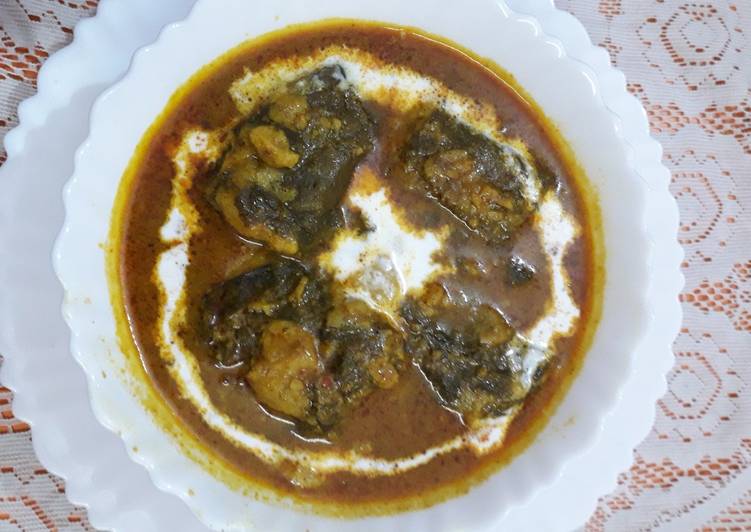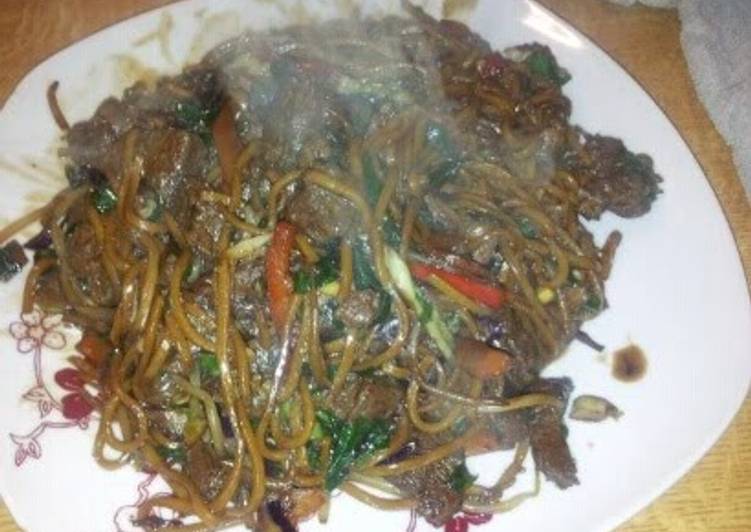
Hello everybody, hope you are having an incredible day today. Today, we’re going to prepare a special dish, traditional arvi leaves curry. One of my favorites. For mine, I am going to make it a little bit unique. This is gonna smell and look delicious.
Traditional Arvi leaves curry is one of the most well liked of recent trending meals on earth. It is simple, it’s fast, it tastes yummy. It is enjoyed by millions every day. They’re nice and they look fantastic. Traditional Arvi leaves curry is something which I have loved my entire life.
Desscription Arbi Leaves Curry Recipe is a mildly spicy and super delicious dish prepared with taro leaves which is healthy and as well as a tasty recipe that everyone loves to eat. People prefer to eat a lunch or as a dinner meal. Arbi or Colocasia is an excellent source of vitamin C and E. It is most popular Indian dish.
To begin with this particular recipe, we have to first prepare a few ingredients. You can have traditional arvi leaves curry using 17 ingredients and 4 steps. Here is how you can achieve it.
The ingredients needed to make Traditional Arvi leaves curry:
- Make ready 8 Arvi(taro) leaves
- Get 1 cup Dhuli urad dal
- Take 1 inch Ginger
- Get 1 medium size chopped onion
- Take 1 tsp chopped coriander leaves
- Get 1 tsp jeera (cumin ) Powder
- Get 1 tsp haldi/Turmeric powder
- Prepare 2 tsp Ginger garlic paste
- Prepare 1/2 tsp Red chilli powder
- Make ready 1 tsp garam masala
- Make ready 2 Green chillies
- Make ready 2 tbsp Oil
- Make ready 1/4 tsp asafoetida
- Prepare to taste Salt
- Get 1/2 tsp methi/fenugreek seeds
- Take 2 tsp Curd
- Prepare as needed Cream for garnishing
Arbi are also called Aloo in Marathi and Colocasia/ Taro in English. It is an excellent source of vitamins C and E, potassium and magnesium. These are used to make snacks, vegetable and gravy curry. Dum Arbi (Colocasia Curry) Dum Arbi, Arbi also known by various aliases as Arvi or Taro or Colocasia, is a root vegetable.
Steps to make Traditional Arvi leaves curry:
- Soak urad dal at least 6 hours, then drain it's water,add green chili ginger zeera asafetida and salt make a fine paste. Wash leaves.
- Spread leaves in a tray and coat with urad dal paste one by one Roll them and cut in pieces. Then steam them for 10 minutes or till they cook properly. Check with a toothpick.
- In a kadhai put some oil heat it and add methi seeds and then put ginger garlic paste into it and saute.after that put chopped onions stir it.Then add haldi coriander clilli powder and salt saute on low flame then add garam masala and saute again. when the mixture leaves oil add curd and stir then add some water as per your choice to make gravy and when it comes a little boil,put the steamed pieces into it. Cook on law flame for five minutes.
- Garnish it witn cream.
These are used to make snacks, vegetable and gravy curry. Dum Arbi (Colocasia Curry) Dum Arbi, Arbi also known by various aliases as Arvi or Taro or Colocasia, is a root vegetable. Dum Arbi is a healthier version of the famous Indian dish where Arbi roots are cooked in a spicy and delicious finger licking yogurt gravy. Taro / Colocasia / Arbi or Ghuiya Curry (Raseele) Recipe Colocasia / arbi or ghuiyan is often enjoyed by people, it can also be made with spices, curd and plain, it can be made as well as the dry vegetable of colocasia / arbi or ghuiyan and it is delicious to eat colocasia / arbi or ghuiyan gravy recipe too. arbi leaves ( colocasia Leaves or taro leave ) rolls curry recipe, Arbi Ke Patte ki sabji , arbi leaves rolls curry recipe Patoday Curry/ Arbi or Colocasia leaf rolls in curry Patra or Patoday are batter coated rolled Arbi/Colocasia leaves, first steamed and then fried.
So that is going to wrap this up for this exceptional food traditional arvi leaves curry recipe. Thanks so much for your time. I’m sure that you will make this at home. There’s gonna be interesting food in home recipes coming up. Don’t forget to bookmark this page in your browser, and share it to your family, friends and colleague. Thanks again for reading. Go on get cooking!

